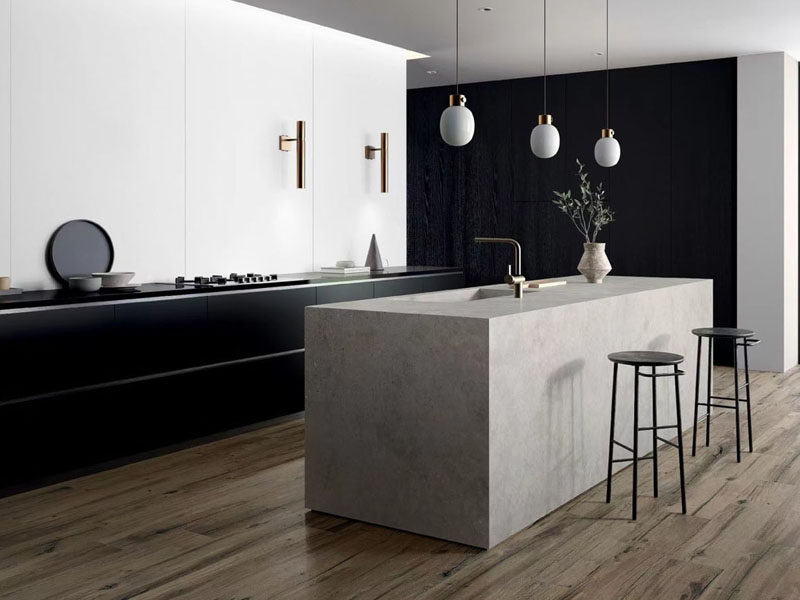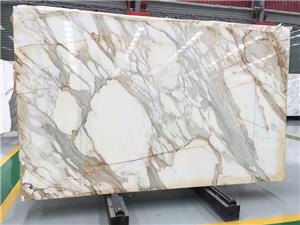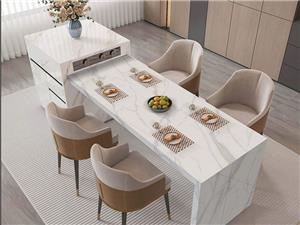Cleaning and maintenance of sintered stone kitchen countertops

When using sintered stone kitchen countertops, the following points should be noted:
Avoid scratches from sharp objects: Although the rock plate is hard, using sharp objects such as knives to directly scratch the countertop may still cause minor scratches, affecting the appearance. Therefore, cutting boards should be used as much as possible to avoid cutting operations on the sintered stone countertop.
Prevent heavy object impact: sintered stone is relatively brittle in texture and are prone to cracking or chipping when hit by heavy objects. In daily use, be careful not to let heavy objects fall from a height and hit the countertop. For example, do not throw large cooking utensils or tableware randomly on the countertop.
Pay attention to temperature changes: Although sintered stone can withstand high temperatures, sudden temperature changes may cause damage to them. Do not place a hot pan just taken off the fire or a baking tray just taken out of the oven directly on a cold sintered stone countertop. It is best to use an insulating pad to prevent cracks on the countertop due to thermal expansion and contraction.
Timely cleaning of stains: Although sintered stone have good stain resistance, if stains are not cleaned for a long time, it may also affect their appearance. In daily use, it is necessary to wipe the water stains, oil stains and other dirt on the countertop with a damp cloth in time. Avoid using sharp tools such as steel wool balls to prevent scratching the countertop. For stubborn stains, a mild cleaner can be used for cleaning. Avoid using strong acid or alkali cleaners to prevent corrosion of the countertop.
Avoid prolonged direct sunlight: Prolonged direct sunlight may cause the color of the sintered stone countertop to change, affecting its appearance. If there is direct sunlight in the kitchen, you can block it by installing curtains or other means.
Pay attention to the protection of the countertop edge: The edge of the sintered stone countertop is relatively fragile. During daily use, avoid collisions and scratches to prevent chipping. At the same time, when installing equipment such as sinks and stoves, make sure that the edges of the countertop are not damaged during the installation process.
Proper placement of items: Avoid placing overly heavy items on the countertop for a long time to prevent deformation of the countertop. Especially at the edge of the countertop, more attention should be paid to the weight distribution of the items to prevent damage to the countertop due to uneven force.




